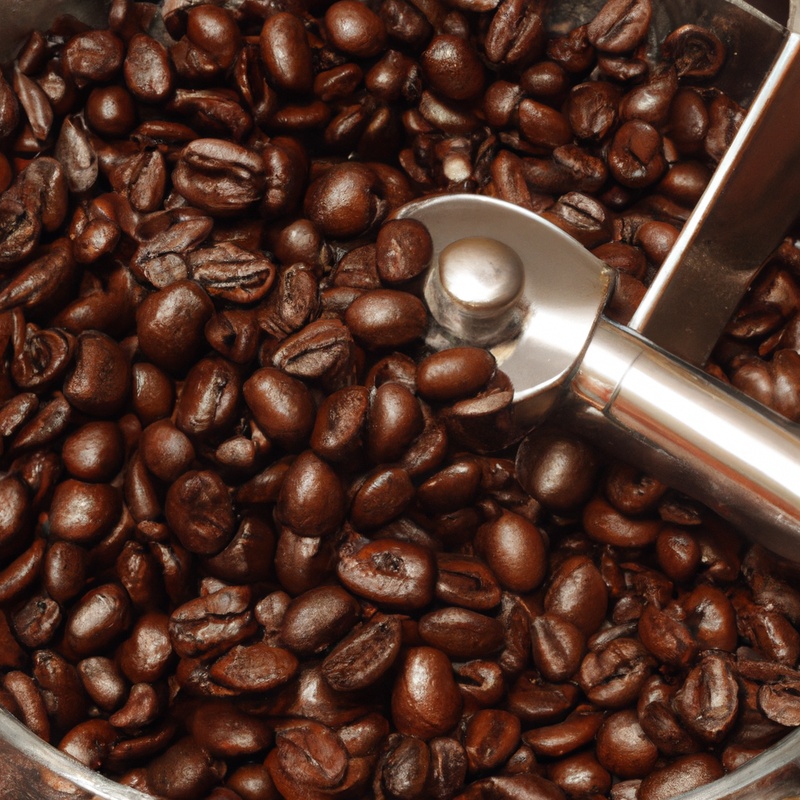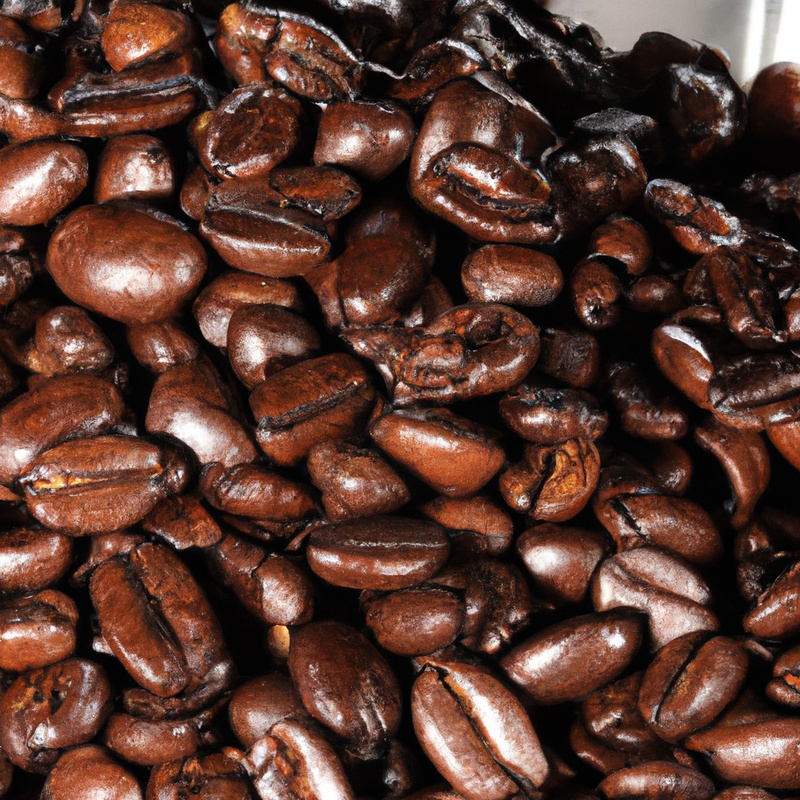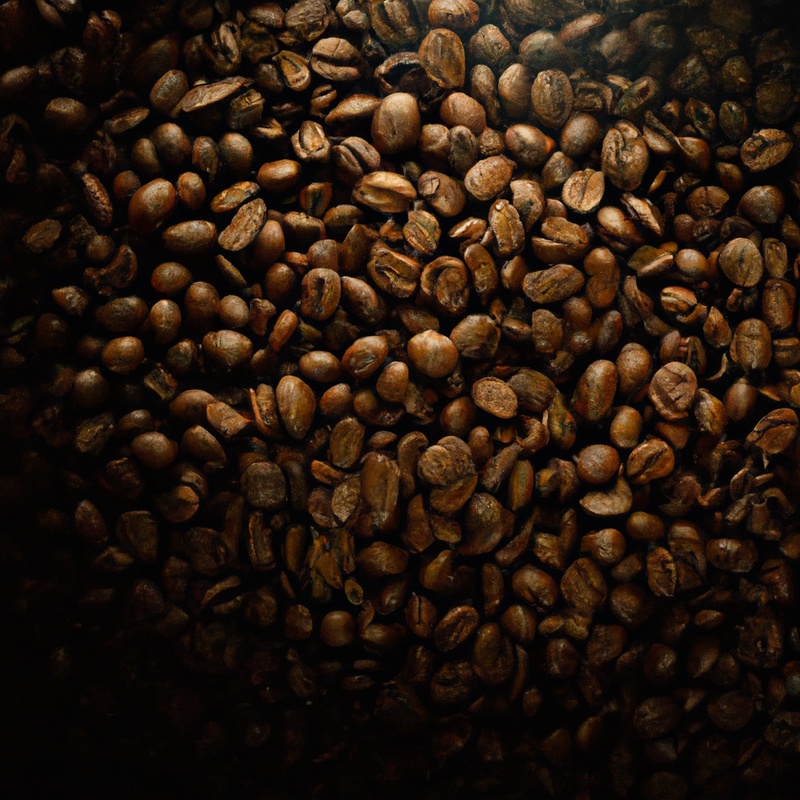Key Takeaways:
- Light roast coffee requires a shorter brewing time to preserve its delicate flavors.
- Use a coarser grind size when brewing light roast coffee for optimal extraction.
- Adjust your water temperature to slightly lower than boiling to avoid over-extracting the coffee.
- Experiment with different brewing methods to find the perfect balance of acidity and brightness in your light roast coffee.
Are you a coffee lover who craves a lighter, more subtle flavor profile? Look no further than light roast coffee! With its delicate flavors and complex aromas, brewing the perfect cup of light roast coffee is an art form worth mastering.
But where do you start?
In this article, we’ll dive into the basics of light roast coffee, why it’s worth choosing, and the step-by-step process to brew it flawlessly. Whether you prefer a pour-over, French press, or other brewing methods, we’ve got you covered.
Get ready to elevate your coffee game and savor every sip of your homemade light roast brew.
Understand the Basics of Light Roast Coffee
Light roast coffee is a type of coffee that is roasted for a shorter period, resulting in a lighter color and a milder flavor.
Understanding the basics of light roast coffee can help you appreciate its unique characteristics.
What is Light Roast Coffee?
Light roast coffee refers to beans that have been roasted for a shorter period, resulting in a light brown color and a mild, subtle flavor.
The roast preserves more of the beans’ natural acidity and floral or fruity notes.
Light roasts are generally less bitter and have a higher caffeine content compared to darker roasts.
With their delicate flavors, light roast coffee is perfect for those who enjoy a more nuanced and vibrant cup of coffee.
Why Choose Light Roast Coffee?
Light roast coffee offers a delicately balanced and nuanced flavor profile, with hints of fruit, floral notes, and vibrant acidity. The lighter roast allows the unique characteristics of the coffee beans to shine through, providing a bright and refreshing brew.
Additionally, light roast coffee has higher caffeine content compared to darker roasts, making it a great choice for those seeking an energy boost.
Its clean and crisp taste is perfect for savoring the intricate flavors and aromas of the beans.
Steps to Brew Light Roast Coffee
Brewing light roast coffee involves a few simple steps that can result in a delicious cup of coffee.
Step 1: Choose High-Quality Beans
When it comes to brewing light roast coffee, one of the most important steps is choosing high-quality beans. To ensure a delicious and flavorful cup, opt for beans that are freshly roasted and sourced from reputable coffee growers.
Look for beans with a brightness and acidity that complements your taste preferences.
Consider experimenting with single-origin beans or blends to find your perfect cup. Don’t be afraid to ask your local coffee roaster for recommendations or do some research online to find highly rated coffee beans.
In the end, the quality of your beans will greatly impact the overall taste and enjoyment of your light roast coffee.
Step 2: Measure the Beans and Water
Now, let’s move on to Step 2: Measure the Beans and Water.
This step is all about getting the right ratio of beans to water for your light roast coffee.
Start by using a scale to measure the amount of beans you’ll need.
Aim for a ratio of 1:16, which means 1 gram of coffee for every 16 grams of water.
Next, grind the beans to a medium-coarse consistency.
This allows for optimal extraction of flavors.
Measure the water using a kitchen scale or a measuring cup.
Make sure to use filtered water for the best taste.
By accurately measuring the beans and water, you’ll ensure a consistently delicious cup of light roast coffee every time.
Cheers!
Step 3: Grind the Beans Correctly
To grind the beans correctly, start with a good quality burr grinder.
This type of grinder ensures a consistent grind size, which is important for brewing balanced and flavorful light roast coffee.
Set the grinder to a medium-fine setting, as this will allow for optimal extraction without over-extracting the flavors.
Remember to grind only the amount of coffee you need for each brew to maintain freshness.
Happy brewing!
Step 4: Determine the Coffee-to-Water Ratio
To determine the coffee-to-water ratio for brewing light roast coffee, a common guideline is to use 1 to 2 tablespoons of coffee for every 6 ounces of water. This ratio can be adjusted based on personal preference.
It’s important to note that using too much coffee can result in a strong and bitter taste, while using too little may lead to a weak and watery brew.
Finding the right balance will help you achieve the desired flavor and strength in your light roast coffee.

Step 5: Choose the Right Brewing Method
Step 5: Choose the Right Brewing Method To brew a perfect cup of light roast coffee, the brewing method you choose plays a key role.
Here are some popular options to consider:
- Pour-over: This classic method involves manually pouring hot water over ground coffee, allowing for precise control and a clean, nuanced flavor.
- French press: With its full-bodied and robust results, the French press is ideal for highlighting the unique characteristics of light roast beans.
- Aeropress: This versatile and portable device utilizes pressure to extract a rich, concentrated brew, perfect for on-the-go coffee lovers.
- Drip coffee maker: For convenience, an automatic drip coffee maker can produce a consistently delicious cup of light roast coffee with minimal effort.
Remember, the brewing method you choose can greatly influence the taste and aroma of your coffee.
Experiment with different techniques to find the one that suits your preference and brings out the best in your light roast beans.
Brewing Methods for Light Roast Coffee
There are several brewing methods that work well for light roast coffee, including pour-over, French press, Aeropress, and drip coffee maker.
Pour-Over Method
Pour-over is a simple yet effective method for brewing light roast coffee. It involves pouring hot water over coffee grounds placed in a filter.
Here’s a step-by-step guide:
- Start by heating water to the ideal temperature (around 200°F.
- Place a filter in your coffee dripper or pour-over device.
- Rinse the filter with hot water to remove any paper taste.
- Add your desired amount of freshly ground light roast coffee into the filter.
- Slowly pour hot water in a circular motion over the coffee grounds, allowing them to bloom.
- Continue pouring water in stages, maintaining a steady stream and avoiding overfilling the filter.
- Adjust the drip rate to control the brewing time.
- Once all the water has passed through the filter, discard the grounds and enjoy your flavorful cup of light roast coffee.
Remember to experiment with different water-to-coffee ratios and pouring techniques to find your perfect brew. Happy brewing!
French Press Method
The French Press method is a popular way to brew light roast coffee. Here’s how it works:
- Start by heating up water until it reaches about 200°F.
- Grind your light roast beans to a coarse consistency.
- Add the ground coffee to the press and pour hot water over it.
- Let it steep for about 4 minutes, then slowly press the plunger down to separate the grounds from the brew.
- Pour the coffee into your favorite mug and enjoy!
The French Press method allows for a rich and full-bodied cup of light roast coffee with all its delicate flavors intact.

Aeropress Method
The Aeropress method is a quick and simple way to brew light roast coffee. Here’s how you can do it:
- Start by setting up your Aeropress. Place a paper filter in the cap and twist it onto the chamber.
- Rinse the filter with hot water to remove any paper residue and preheat the Aeropress.
- Grind your light roast coffee beans to a medium-fine consistency.
- Add the ground coffee into the Aeropress chamber. Use a ratio of 1:15 or 1:16 coffee to water for a balanced strength.
- Pour hot water (around 200°F or 93°C into the chamber, saturating all the coffee grounds.
- Stir gently for about 10 seconds to ensure even extraction.
- Attach the plunger to the chamber and carefully press down with steady pressure until you hear a hissing sound.
- Serve your freshly brewed light roast coffee immediately and enjoy!
Feel free to adjust the brewing parameters, such as grind size, water temperature, and extraction time, to suit your taste preferences. With the Aeropress method, you’ll be able to savor the nuanced flavors and vibrant acidity of your favorite light roast beans.
Happy brewing!

Drip Coffee Maker Method
The Drip Coffee Maker is a popular and convenient method for brewing light roast coffee.
Here’s how to do it:
- Start by grinding your beans to a medium-coarse consistency.
- Add the ground coffee to the paper filter in the brew basket.
- Fill the water reservoir with clean, cold water. Use the correct ratio: 1 to 2 tablespoons of coffee for every 6 ounces of water.
- Turn on the coffee maker and let it start brewing.
- Once the brewing is complete, remove the carafe and pour yourself a delicious cup of light roast coffee!
The Drip Coffee Maker provides a hassle-free way to enjoy the flavors and nuances of light roast coffee.
Give it a try and savor the rich, bright taste.
Tips for Brewing the Perfect Light Roast Coffee
To brew the perfect light roast coffee, use filtered water and preheat your equipment.
Control the brewing time and temperature, and try experimenting with different brew times.
Lastly, store your light roast coffee properly to maintain its freshness and flavor.
Use Filtered Water
Using filtered water is essential for brewing the perfect light roast coffee. It helps enhance the flavors and prevents any potential taste alterations caused by impurities in tap water.
The filtration process removes any chlorine, minerals, or impurities that might affect the taste of your coffee.
Filtered water ensures a clean and pure extraction, allowing you to fully enjoy the delicate flavors and subtle nuances of your light roast coffee. So, be sure to use filtered water for a truly exceptional brewing experience.
Preheat Your Equipment
Before brewing your light roast coffee, it’s important to preheat your equipment. This step ensures that your brewing process starts off at the right temperature, resulting in a more optimal extraction and better coffee flavor.
Preheating your equipment can be as simple as running hot water through the brewer, rinsing the coffee filter, or warming up the coffee pot.
By preheating, you will help maintain the proper temperature throughout the brewing process and enhance the overall taste of your light roast coffee.
Control the Brewing Time and Temperature
Controlling the brewing time and temperature is essential for brewing the perfect light roast coffee.
Here’s why:
- Time: Adjusting the brewing time can affect the flavor profile of your coffee. Longer brewing times can result in a stronger and more robust flavor, while shorter brewing times can lead to a lighter and more delicate taste. Experiment with different brewing times to find your preferred balance.
- Temperature: The brewing temperature also plays a significant role. Brewing light roast coffee at a higher temperature can bring out more acidity and brightness in the flavor, while lower temperatures can highlight the sweetness and subtle nuances. Aim for a temperature between 195-205°F (90-96°C for optimal results.
Remember, brewing time and temperature are subjective and depend on your personal taste preferences.
Play around with these variables to find the perfect balance that suits your palate.
Experiment with Different Brew Times
When brewing light roast coffee, it’s important to experiment with different brew times.
Start by trying shorter brew times to bring out the bright and acidic flavors.
If the coffee tastes too sour, try brewing for a longer time to tame the acidity and bring out more sweetness.
Remember, brewing times can vary depending on the brewing method and personal preference, so don’t be afraid to adjust and find what works best for you.
Happy brewing!
Store Light Roast Coffee Properly
To store light roast coffee properly, make sure to:
- Keep it in an airtight container: This will prevent moisture, oxygen, and light from affecting the flavor and freshness of the coffee.
- Store it in a cool, dark place: Heat and light can cause the coffee to spoil quickly. Find a spot away from direct sunlight and sources of heat, such as stovetops or appliances.
- Avoid using the freezer: While it may seem like a good idea, freezing light roast coffee can damage the delicate flavors. It’s best to store it at room temperature.
- Use it within two weeks: Unlike darker roasts, light roast coffee tends to lose its flavor quicker. Aim to use it within two weeks of the roast date for the best tasting cup.
Frequently Asked Questions (FAQs) about Brewing Light Roast Coffee
How does the flavor of light roast coffee differ from dark roast coffee?
The flavor of light roast coffee is lighter and more delicate compared to dark roast coffee.
Light roast coffee beans are roasted for a shorter period, preserving their natural flavors and acidity.
This results in a brighter and more complex taste profile, with notes of fruit, floral, and sometimes even tea-like flavors.
On the other hand, dark roast coffee is roasted for a longer time, resulting in a bolder and more robust flavor.
It has a rich, smoky taste with fewer acidity and more pronounced caramelized flavors.
The choice between light and dark roast ultimately depends on your personal preference for flavor intensity.
Can I use the same brewing method for both light and dark roast coffee?
Yes, you can definitely use the same brewing method for both light and dark roast coffee. The main difference between the two is the level of roasting, which affects the flavor and caffeine content.
However, the brewing process remains the same.
Whether you prefer a light or dark roast, you can use your preferred brewing method, such as drip, French press, or pour-over. Just adjust the amount of coffee and water according to your taste preference.
Enjoy your cup of joe!
How do I know if I’m brewing light roast coffee correctly?
Knowing if you’re brewing light roast coffee correctly can be determined by a few key indicators.
Firstly, the color of the brewed coffee should be light to medium brown, rather than dark.
Secondly, the aroma of the coffee should be fruity, floral, or tea-like, rather than strong and smoky.
Thirdly, the taste should be bright and acidic, with delicate flavors and a clean finish.
By paying attention to these characteristics, you can ensure that you’re brewing light roast coffee correctly.
So, take a sip, savor the flavors, and enjoy your perfectly brewed light roast!
What should I do if my light roast coffee tastes weak or bitter?
If your light roast coffee tastes weak or bitter, there are a few things you can try to improve the flavor.
Firstly, make sure you are using the correct coffee-to-water ratio.
Using too little coffee can result in a weak taste, while using too much can make it bitter.
Secondly, check the grind size.
If it’s too fine, it can lead to bitterness, so try adjusting it to a coarser setting.
Lastly, consider the water temperature and brewing time.
If the water is too hot or the brewing time is too long, it can contribute to a bitter taste.
Experiment with these factors to find the right balance that suits your preference.
Final Verdict
Brewing the perfect light roast coffee requires attention to detail and adherence to proper techniques. By selecting high-quality beans, measuring the beans and water accurately, grinding the beans correctly, determining the coffee-to-water ratio, and choosing the right brewing method, you can bring out the delicate flavors and nuanced aromas of light roast coffee.
Additionally, following tips such as using filtered water, preheating equipment, controlling brewing time and temperature, experimenting with brew times, and storing light roast coffee properly can enhance your brewing experience.
With these insights and techniques, you can confidently brew a delicious and flavorful cup of light roast coffee every time.
